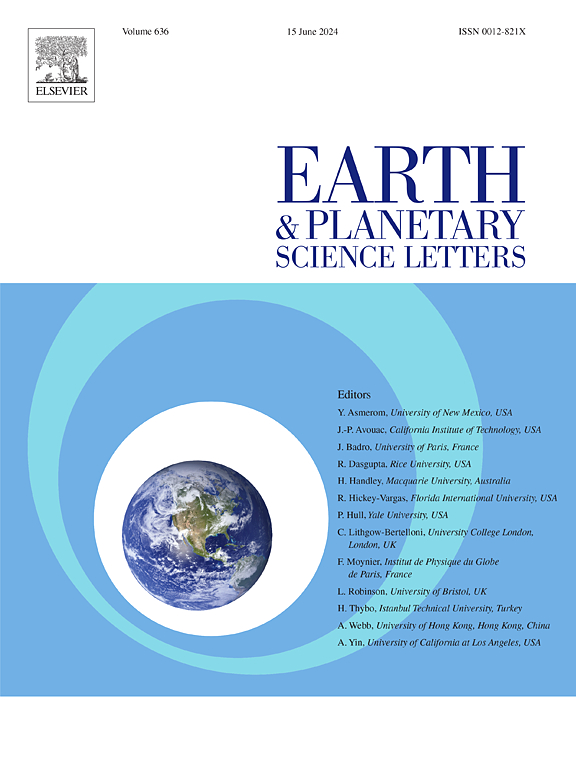二氧化碳和氮气混合物中二氧化硫的电击穿产物以及金星大气中神秘的紫外线吸收器的含义
IF 4.8
1区 地球科学
Q1 GEOCHEMISTRY & GEOPHYSICS
引用次数: 0
摘要
含硫物质被认为是金星大气中的紫外线吸收剂,它们可以通过光化学或电化学产生。本文报道了在与金星云层相关的压力和温度条件下,在SO2与CO2和N2混合气体中进行的放电实验。利用等离子体光谱直接观察到SO2的主要击穿产物为自由基SO*、SI*、SII*、S2*、OI*、OII*;稳定的终产物为S8颗粒和H2SO4液滴。在几分钟的放电后,它们的共同展示暗示了短寿命中间相的形成(从自由基作为前体),包括多硫和硫氧化物,它们都是神秘的紫外线吸收剂的公认候选者。在所有实验条件下对SO*和S2*等离子体谱线的同时观测表明,SO2的两个主要击穿路径可能同时发生,这两个路径需要相似的电子能量。在可能发生电活动的金星云层中,光弧放电对SO2的高击穿率会在区域内产生各种具有非常高瞬态密度的s基,比光化学中类似物质的全球混合比高3个数量级。区域电化学反应s物质的高密度可能是金星紫外图像中暗特征分布不均匀和时间变化的原因。本文章由计算机程序翻译,如有差异,请以英文原文为准。
Electrical breakdown products of SO2 in CO2 and N2 mixtures and the implication to the mysterious UV absorber in Venus's atmosphere
Sulfur-containing species are suggested as the UV-absorbers in Venus’s atmosphere, which can be generated by photochemistry or electrochemistry. Here we report an electrical discharge experiment in gas mixtures of SO2 with CO2 and N2, under the pressure and temperature conditions relevant to the Venus cloud layer. We directly observed the primary breakdown products of SO2 as free radicals SO*, SI*, SII*, S2*, OI*, OII* using plasma spectroscopy; and the stable ending products as S8 particles and H2SO4 droplets using Raman spectroscopy. Their co-exhibitions after a few minutes of electrical discharge imply the formation of short-lived intermediate phases (from the radicals as precursors), including polysulfur and sulfur-oxides, both are recognized candidates for the mysterious UV-absorber. The simultaneous observations of plasma lines of SO*and S2* under all experimental conditions suggest that the two major breakdown paths of SO2, which require similar electron energy, are likely to occur simultaneously. In Venus’s cloud layer where electric activity may occur, the high breakdown rate of SO2 by glow-to-arc electric discharge would generate various S-bearing radicals with very high transient density regionally, ∼3 orders of magnitude higher than the global mixing ratio of similar species from photochemistry. The high density of reactive S-species from regional electrochemistry could be responsible for the inhomogeneous distribution and temporal changes of dark features in Venus UV images.
求助全文
通过发布文献求助,成功后即可免费获取论文全文。
去求助
来源期刊

Earth and Planetary Science Letters
地学-地球化学与地球物理
CiteScore
10.30
自引率
5.70%
发文量
475
审稿时长
2.8 months
期刊介绍:
Earth and Planetary Science Letters (EPSL) is a leading journal for researchers across the entire Earth and planetary sciences community. It publishes concise, exciting, high-impact articles ("Letters") of broad interest. Its focus is on physical and chemical processes, the evolution and general properties of the Earth and planets - from their deep interiors to their atmospheres. EPSL also includes a Frontiers section, featuring invited high-profile synthesis articles by leading experts on timely topics to bring cutting-edge research to the wider community.
 求助内容:
求助内容: 应助结果提醒方式:
应助结果提醒方式:


